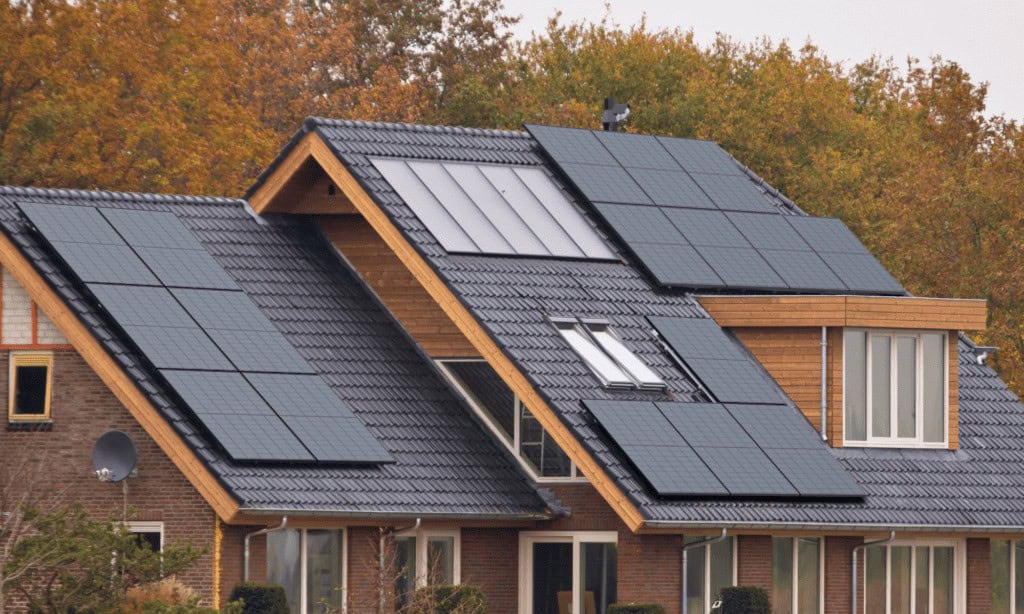Table of Contents
Electricity prices are going up worldwide, and Australia is no exception. Our rates are based on a combination of how much electricity we use and the daily access fees we pay regardless of how much power we use.
Access fees cover things like maintenance of lines and poles, upgrades and administrative costs. Usage rates are based on how much power we use, usually between 20 and 35 cents per kWh.
We’ll explore the prices in different states, explain why some states charge more, and provide information on finding the best rates. Let’s get started!
What Are the Average Electricity Prices in Australia?
The average electricity prices in Australia are based on your daily access fees and usage rates. Daily fees are usually between 93 and 107 cents and don’t vary with your power usage. Your usage rates, about 20 – 35 cents per kWh, are in addition to daily fees. So, your monthly bill will be based on those daily fees and your household energy use.
Understanding Usage Charges
In Australia, you pay a daily access fee for each day you have the power hooked up. This fee typically runs about 93 – 107 cents per day, adding significantly to your monthly bill. Even if you use no power, as long as you are on the electrical grid, you pay the daily fee.
However, on top of that is your usage charge, usually between about 20 and 35 cents per kWh you use. Therefore, your energy use heavily impacts your monthly bill.
Electricity Prices per kWh by State and Territory
The AEMC Residential Electricity Price Trends report can give us the current average price per kilowatt-hour (kWh). These rates are averages based on single-rate tariffs from the different distribution networks in each state.
| State | Average Price in c/kWh |
| SA | 34.14 |
| ACT | 27.58 |
| NSW | 27.57 |
| VIC | 25.19 |
| TAS | 25.04 |
| SEQ | 19.46 |
What Affects Your Electricity Bill?
Your electricity bill is affected by your location and the energy distributor for your area, the type of tariff you’re subscribed to (e.g., single rate or time of use), any bill credits you may be eligible for, and your total power use.
While location and tariff play an important role in price, your bill will mostly be affected by how many kWh your household uses. This is determined by a number of factors, including the size, age, and type of home you live in, the number of people living there, and the kinds of appliances you have and how often you run them.
If your household uses a lot of power, you can offset those high bills using an EcoFlow Solar Generator like the EcoFlow DELTA Series Solar Generators to harness the power of limitless renewable energy. There are numerous systems to choose from, such as the EcoFlow DELTA 2 + 220W Solar Panel and EcoFlow DELTA Pro + 400W Solar Panel so you can find one to suit your needs.
Whether you want a small hybrid system to supplement your electrical usage or a large system to power an entire home, regardless of your energy needs, solar can work for you.
Going solar has many benefits, but the biggest incentive for some is the money you save. Once the savings you get on your electrical bill pay for installing your solar system, called the solar payback period, your electricity is completely free.
Depending on the system you get and your power prices, this takes 5 – 10 years. Given that solar systems last at least 25 years, your energy could be free for as much as 20 years.
Why Do Some States Pay More for Electricity?
The price you pay for electrical depends on your location and the energy distributor in your area. Distributors charge fees for maintaining the network, such as maintenance, repairs, and upgrades for poles, wires, and other infrastructure, which all add to the final cost. However, it’s a bit more complicated because it also depends heavily on the mix of energy sources used.
The local rates in your area will vary depending on whether or not there are cheaper renewable energy sources like wind and solar, which help to offset some of the high costs of using coal and gas. There is not usually enough local renewable energy to supply the energy needs in any state, so the price is a balance between the cost of renewables and non-renewables in that area.
For instance, in South Australia, even though they rely heavily on wind, they also rely heavily on gas, which is more expensive than coal. So overall, their balance of energy supplies leads to higher prices than the rest of Australia. However, SA does provide concessions to its customers that help soften the impact of those higher energy costs.

How to Find the Best Electricity Rates
If your monthly bill is high, you can always go online to compare prices between the different energy providers in your area. Some places have multiple providers, while more remote areas may have fewer options available.
When you shop around, consider whether they offer sign-up deals or loyalty programs that can help lower your prices. Also, check their online reviews, customer support options, and whether or not they have apps to help you view and manage your pan.
Another option is to check if they offer solar feed-in tariffs. Under these tariffs, installing solar panels can sell your excess energy back to the grid and significantly reduce your bill.
In fact, installing EcoFlow’s Solar Panels can eliminate your power bills altogether using clean, sustainable energy from the sun. If you have enough panels and battery backup to supply your home, you can gain energy independence, go off-grid completely, and never pay an electrical bill again.
You also no longer have to worry about the grid going down during tropical storms or bushfires; your lights will stay on when your neighbourhood goes dark.
Frequently Asked Questions
A single kWh of electricity in Australia varies significantly, depending on where you live and who your energy distributor is. However, on average, it can cost between 20 and 35 cents per kWh. Then there are your daily access fees, about 93 – 107 cents per day, regardless of how much power you use.
South Australia typically has the highest electricity prices in Australia, with an average cost of 34.14 cents per kWh, though yours may be higher or lower than average depending on your precise location, your specific tariff, and any bill credits you may have.
Final Thoughts
Electricity prices are rising in Australia, where you can expect to pay 20 – 35 cents per kWh on average, although those numbers can vary with location, tariff type, and bill credits. Your daily access fees also add 93 – 107 cents daily, regardless of your power usage.
If you’re tired of climbing power bills, consider investing in an EcoFlow Solar Generator to help reduce or even eliminate your monthly bills. After your solar payback period, when the savings on your bill pay for your system, your electricity is completely free for as much as 20 years! Now, who would say no to free energy?


